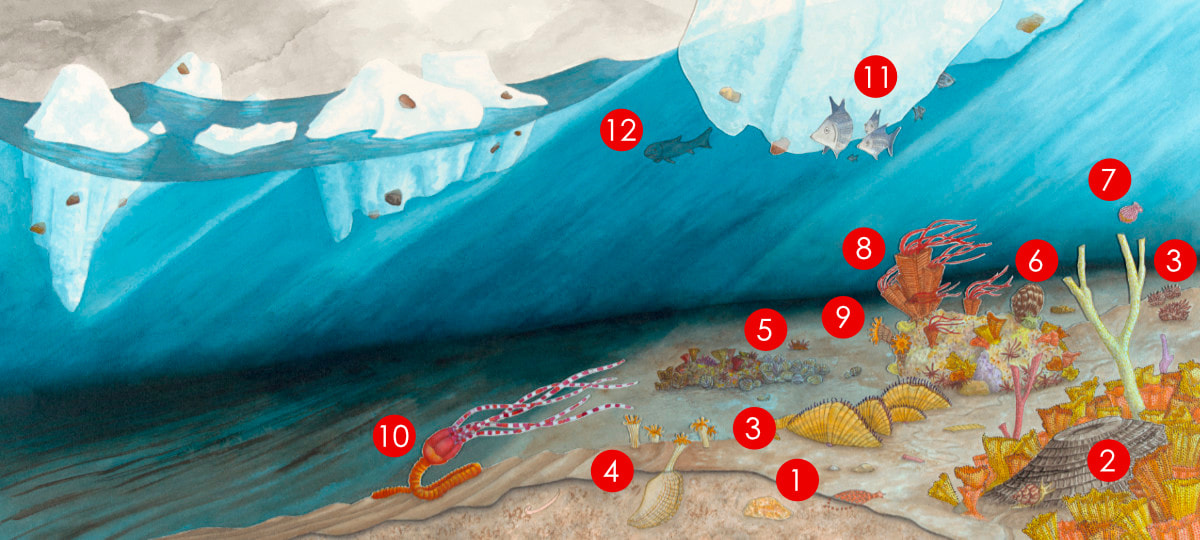The Permian Sea
 Permian layers exposed in sea cliffs at Fossil Cove, southern Tasmania
Permian layers exposed in sea cliffs at Fossil Cove, southern Tasmania
The Permian period covers a span of time between 299 and 252 million years ago.
In the Permian, Australia, Tasmania and Antarctica were joined together as part of the supercontinent Pangaea. They were located within the southern polar region of the planet and were partly covered by shallow seas.
Glaciers flowed from land out to sea, the ice breaking off at the coast to form floating bergs. Rocks and rubble scraped off the land surface were carried out with the ice, eventually falling to the sea floor as ‘dropstones’.
In Tasmania, rocks of Permian age are common and can be easily found exposed in hillsides and in cliffs including along the modern shoreline in the south-east of the state. These rocks are often rich with fossils, reflecting the abundance of life in this period.
By the late Permian sea levels had fallen and the area around Hobart was a swampy, river-crossed plain. Ultimately, the thriving communities of the Permian, both on land and under the sea were destroyed - and many lifeforms made extinct - by a major earth event that marked the end of the period.
In the Permian, Australia, Tasmania and Antarctica were joined together as part of the supercontinent Pangaea. They were located within the southern polar region of the planet and were partly covered by shallow seas.
Glaciers flowed from land out to sea, the ice breaking off at the coast to form floating bergs. Rocks and rubble scraped off the land surface were carried out with the ice, eventually falling to the sea floor as ‘dropstones’.
In Tasmania, rocks of Permian age are common and can be easily found exposed in hillsides and in cliffs including along the modern shoreline in the south-east of the state. These rocks are often rich with fossils, reflecting the abundance of life in this period.
By the late Permian sea levels had fallen and the area around Hobart was a swampy, river-crossed plain. Ultimately, the thriving communities of the Permian, both on land and under the sea were destroyed - and many lifeforms made extinct - by a major earth event that marked the end of the period.



